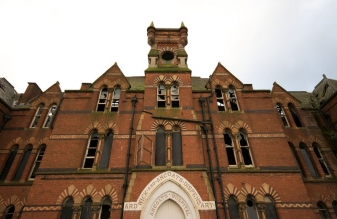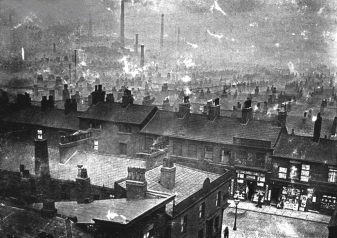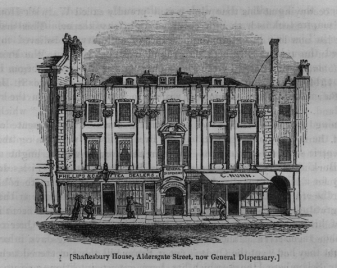
Ardwick and Ancoats Dispensary
The Grade II listed Ardwick and Ancoats Dispensary, built between 1872 and 1874, is the last remaining building of the historic Ancoats Hospital. Ancoats Hospital, built in 1828, was the commonly used name for the large inner-city suburb hospital of Ancoats in Manchester city centre. After a period of expansion and redevelopment, the current Ancoats Dispensary building - having had two previous locations around Ancoats - is the last incarnation of Ancoats Hospital and has been settled in its current location ever since. [source]

The background of Ancoats
The population of Ancoats throughout the 1790s was small until the process of industrialization began, turning Manchester into the ‘world’s first industrial city.’ [source] By the 1830s, around 32,000 people lived and worked in Ancoats.
This population consisted principally of Irish labourers and textile workers - census records show that the Irish population accounted for 40% of the Ancoats workforce by the 1900s. [source] As a heavily industrialized suburb of Manchester, its dense population and compacted space created ‘a mass of mean streets and courtyards zigzagged amongst factories and canals.’
The average life expectancy in Manchester throughout this period for a typical labourer was just seventeen years old.

The Georgian-era dispensary movement
The origins of English charitable movements for the operation of dispensaries and other types of establishment for the treatment of illness (such as hospitals, lying-in facilities and lunatic asylums) can be traced to the Georgian era.
John Lettsom had established the first dispensary, the General Dispensary, in London in 1770. [source]
These charitable endeavours were referred to as ‘voluntary hospitals’ that, according to medical historian Roy Porter, ‘... signal[led] a new recognition on the part of influential elites that the people’s health mattered.’ [source]

The specific purpose of dispensaries was to advise and treat poor people at their homes or as outpatients, relieving some of the burden on hospital facilities and minimizing the possibility of epidemics that could arise if people with infectious diseases were admitted to hospitals as inpatients.
Those who attended patients under the aegis of such organisations generally did so at no charge, although they might gain social prestige and clients as a result of their actions.
Those who donated or subscribed to the institutions generally gained access to networking opportunities, a voice in the management of the charity and the right to refer patients to it.
The opportunity to police morals however was thus: 1) the worthy-but-poor might be favoured with dispensary care, 2) the unworthy were condemned to the ravages of the workhouse. Kevin Siena notes for example that ‘this link between morality and charitable worthiness spelled bad news for syphilitics.’


